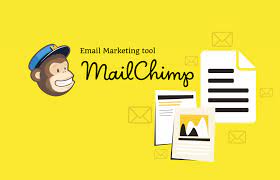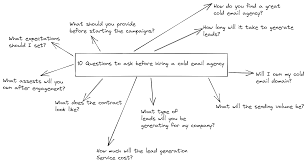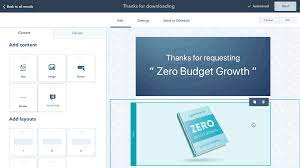Mailchimp Email Marketing: A Powerful Tool for Business Growth
In today’s digital world, effective communication with customers is crucial for the success of any business. Email marketing has emerged as one of the most powerful strategies to engage with your audience, build relationships, and drive conversions. And when it comes to email marketing platforms, Mailchimp stands out as a leader in the industry.
Mailchimp is a comprehensive email marketing service that offers a wide range of features and tools to help businesses of all sizes succeed in their email campaigns. With its user-friendly interface and robust functionality, Mailchimp has become the go-to choice for marketers worldwide.
One of the key advantages of using Mailchimp is its simplicity. Whether you are an experienced marketer or just starting out, Mailchimp’s intuitive design makes it easy to create and send professional-looking emails. With its drag-and-drop editor, you can customize templates, add images and videos, and craft compelling content without any coding knowledge.
Personalization is another area where Mailchimp excels. The platform allows you to segment your audience based on various criteria such as demographics, purchase history, or engagement level. This enables you to send targeted messages that resonate with each segment, increasing the chances of conversion. Moreover, Mailchimp’s automation features enable you to set up personalized email sequences that are triggered by specific actions or events, further enhancing customer engagement.
Mailchimp also provides robust analytics tools that give you valuable insights into your email campaigns’ performance. You can track metrics such as open rates, click-through rates, and conversion rates in real-time. This data allows you to measure the effectiveness of your campaigns and make data-driven decisions to optimize future efforts.
Furthermore, Mailchimp integrates seamlessly with various e-commerce platforms and customer relationship management (CRM) systems. This integration enables you to sync customer data effortlessly and automate workflows between different systems. By connecting Mailchimp with your e-commerce platform or CRM system, you can create targeted email campaigns based on customer behavior and purchase history, maximizing the impact of your marketing efforts.
Security and deliverability are also top priorities for Mailchimp. The platform takes stringent measures to protect your data and ensure that your emails reach the recipients’ inboxes. With Mailchimp’s advanced spam filter diagnostics, you can identify potential issues that might affect your deliverability and take corrective actions to improve your email’s chances of reaching the intended audience.
In addition to its core email marketing features, Mailchimp offers a range of additional tools. These include landing page creation, social media integration, ad retargeting, and audience insights. This all-in-one approach allows businesses to streamline their marketing efforts and have a unified view of their campaigns’ performance.
Whether you are a small business owner or a marketing professional in a large organization, Mailchimp provides the tools and resources you need to succeed in your email marketing endeavors. Its user-friendly interface, personalization options, robust analytics, and seamless integrations make it an invaluable asset for any business looking to grow its customer base and boost conversions.
In conclusion, Mailchimp is more than just an email marketing platform; it is a comprehensive solution that empowers businesses to connect with their audience effectively. With its user-friendly interface, powerful automation features, and detailed analytics, Mailchimp helps businesses craft engaging emails that drive results. Whether you’re just starting out or have an established brand presence, Mailchimp can take your email marketing efforts to new heights.
Frequently Asked Questions: Mailchimp Email Marketing in English (UK)
- How do I set up a Mailchimp account?
- How do I create an email template in Mailchimp?
- What are the best practices for email marketing with Mailchimp?
- How can I track the performance of my emails in Mailchimp?
- What are the costs associated with using Mailchimp for email marketing?
How do I set up a Mailchimp account?
Setting up a Mailchimp account is a straightforward process. Follow these steps to get started:
- Visit the Mailchimp website: Go to www.mailchimp.com in your web browser.
- Click on “Sign Up for Free”: On the Mailchimp homepage, you’ll see a button that says “Sign Up for Free.” Click on it to begin the registration process.
- Enter your email and create a username and password: Provide your email address and create a unique username and password for your Mailchimp account. Make sure to choose a strong password to ensure the security of your account.
- Fill in your business information: Next, you’ll be asked to provide some basic information about your business, including the name, address, and website URL. Fill in these details accurately as they will be used for various purposes within the platform.
- Verify your email address: After entering your business information, Mailchimp will send a verification email to the address you provided during registration. Open the email and click on the verification link to confirm your account.
- Complete additional details: Once you’ve verified your email, you’ll be prompted to provide some additional information about yourself and your business, such as industry type and contact details. Fill in these details accurately as they help personalize your experience with Mailchimp.
- Explore Mailchimp’s features: Once you’ve completed the initial setup process, you’ll be directed to your Mailchimp dashboard. Take some time to familiarize yourself with the various features and tools available within the platform.
- Connect with integrations (optional): If you use other platforms such as e-commerce systems or CRM software, you can integrate them with Mailchimp for seamless data syncing and automation capabilities. You can explore these integrations in the “Integrations” section of your dashboard.
That’s it! You have successfully set up a Mailchimp account. From here, you can start creating email campaigns, building subscriber lists, and utilizing the platform’s powerful features to engage with your audience effectively. Mailchimp also provides helpful resources and tutorials to guide you through the process of creating and sending your first email campaign.
How do I create an email template in Mailchimp?
Creating an email template in Mailchimp is a straightforward process. Here’s a step-by-step guide to help you get started:
Log in to your Mailchimp account.
Click on the “Campaigns” tab located at the top of the page.
On the Campaigns page, click on the “Create Campaign” button.
In the campaign creation menu, select “Email”.
Choose the type of campaign you want to create (Regular, Automated, A/B Testing) and click on “Begin”.
In the “To” field, select your audience or segment for the email campaign.
Give your campaign a name and fill in the necessary details such as subject line and sender information.
On the “Design” step, you’ll have two options: “Layouts” and “Themes”. Choose either option based on your preference.
– Layouts: This option allows you to start from scratch or use pre-designed layouts provided by Mailchimp. You can customize these layouts by adding text blocks, images, buttons, and other elements.
– Themes: This option provides pre-built templates with different designs and styles. You can choose a theme that aligns with your brand’s look and feel.
Once you’ve selected a layout or theme, you can start customizing it by clicking on any element within the template.
Use Mailchimp’s drag-and-drop editor to add or delete content blocks, rearrange sections, change fonts and colors, and upload images relevant to your email campaign.
To edit text within a content block, simply click on it and start typing or make changes using the formatting toolbar that appears.
Customize any additional elements like buttons or social media icons by selecting them and using the editing options provided.
To preview how your email template will appear on different devices (desktop, mobile), click on the eye icon located at the top of the editor.
Once you’re satisfied with your template, click on the “Save & Close” button to save your changes.
You can then proceed to the next steps in creating your email campaign, such as scheduling or testing.
Remember, Mailchimp offers a range of customization options, so feel free to explore and experiment until you achieve the desired look for your email template.
What are the best practices for email marketing with Mailchimp?
When it comes to email marketing with Mailchimp, there are several best practices to keep in mind to maximize your campaign’s effectiveness. Here are some key tips:
- Build a Quality Email List: Focus on growing an engaged and permission-based email list. Avoid purchasing email lists or adding contacts without their consent. Encourage sign-ups through your website, social media channels, and other touchpoints.
- Segment Your Audience: Use Mailchimp’s segmentation features to divide your subscribers into different groups based on demographics, interests, or past interactions. This allows you to send targeted and personalized emails that resonate with each segment.
- Craft Compelling Subject Lines: The subject line is the first thing recipients see in their inbox, so make it attention-grabbing and compelling. Keep it concise, clear, and relevant to entice recipients to open your emails.
- Design Mobile-Friendly Emails: With the majority of people accessing emails on mobile devices, ensure that your emails are mobile-friendly and responsive. Use a clean layout, legible fonts, and appropriately sized images for optimal viewing across different devices.
- Personalize Your Emails: Leverage Mailchimp’s personalization features to include recipient names or other relevant details in your emails. Personalization creates a sense of connection and increases engagement.
- Create Engaging Content: Deliver valuable content that resonates with your audience’s needs and interests. Use a mix of text, images, videos, and CTAs (call-to-action) strategically placed throughout the email to encourage clicks and conversions.
- Test Before Sending: Take advantage of Mailchimp’s testing capabilities by sending test emails to yourself or a small group before launching the campaign. Check for any formatting issues, broken links, or typos that might affect the recipient’s experience.
- Monitor Email Performance: Regularly review key metrics such as open rates, click-through rates (CTR), conversion rates, and unsubscribe rates. Analyzing these metrics helps you understand the effectiveness of your campaigns and make data-driven decisions for future improvements.
- Maintain Consistency: Establish a consistent email schedule to keep your subscribers engaged without overwhelming them. Whether it’s a weekly newsletter or monthly updates, be reliable and deliver value consistently.
- Comply with Email Laws and Regulations: Ensure that your email campaigns comply with relevant laws, such as GDPR (General Data Protection Regulation) or CAN-SPAM Act. Include an unsubscribe link in every email and honor opt-out requests promptly.
Remember, these best practices are general guidelines, and it’s essential to adapt them to suit your specific audience and industry. Regularly monitor results, experiment with different approaches, and refine your strategy based on what works best for your business.
How can I track the performance of my emails in Mailchimp?
Tracking the performance of your emails in Mailchimp is essential to measure the effectiveness of your campaigns and make data-driven decisions to optimize future efforts. Here are the steps to track your email performance in Mailchimp:
Log in to your Mailchimp account and navigate to the Campaigns tab.
Select the campaign that you want to track and click on its name.
In the campaign overview, you will see an overview of key metrics such as open rate, click rate, bounce rate, and unsubscribe rate.
To dive deeper into the performance data, click on the Reports tab within the campaign.
The Reports page provides detailed insights into various metrics related to your email campaign. Here are some key metrics you can track:
– Open Rate: This metric shows how many recipients opened your email. It indicates how engaging your subject line and preview text were.
– Click Rate: The click rate measures how many recipients clicked on links within your email. It helps evaluate the effectiveness of your call-to-action and content.
– Bounce Rate: Bounces occur when an email is not delivered successfully to a recipient’s inbox. Bounces can be either hard (permanent) or soft (temporary). Monitoring bounce rates helps maintain a clean and up-to-date email list.
– Unsubscribe Rate: This metric shows how many recipients opted out of receiving future emails from you. It’s important to keep an eye on this rate as it indicates whether your content or frequency aligns with subscribers’ expectations.
– Conversion Rate: If you have set up conversion tracking in Mailchimp, this metric measures how many recipients completed a desired action after clicking through from your email (e.g., making a purchase or filling out a form).
You can also view engagement data for individual subscribers by clicking on the Subscribers tab within the Reports page.
Mailchimp allows you to compare the performance of different campaigns to identify trends and patterns. You can access these comparisons by going to the Reports tab and selecting “Compare campaigns.”
Additionally, Mailchimp provides visual representations of your email performance through graphs and charts, making it easier to understand the data at a glance.
By regularly monitoring and analyzing these metrics, you can gain valuable insights into your email campaign’s performance. This information will help you refine your strategies, improve engagement, and achieve better results in future campaigns.
What are the costs associated with using Mailchimp for email marketing?
Mailchimp offers a variety of pricing plans to cater to different business needs. Here are the key cost factors associated with using Mailchimp for email marketing:
- Free Plan: Mailchimp offers a free plan that allows you to send up to 10,000 emails per month to a maximum of 2,000 subscribers. This plan is suitable for small businesses or individuals who are just starting out and have a limited subscriber base.
- Essentials Plan: The Essentials Plan starts at $9.99 per month and is designed for growing businesses. It offers additional features such as A/B testing, custom branding, and advanced audience insights. The pricing of this plan depends on the number of subscribers in your audience.
- Standard Plan: The Standard Plan is suitable for businesses with more advanced email marketing needs. It starts at $14.99 per month and includes all the features of the Essentials Plan, along with additional features like automation workflows, retargeting ads, and custom templates.
- Premium Plan: For larger businesses or those with more extensive marketing requirements, Mailchimp offers the Premium Plan starting at $299 per month. This plan includes all the features of the Standard Plan, plus advanced segmentation options, multivariate testing, phone support, and additional customization options.
It’s important to note that pricing may vary based on factors such as the number of subscribers in your audience and any add-ons or extra features you choose to include in your plan.
Mailchimp also offers pay-as-you-go pricing options for those who want flexibility in their email marketing campaigns without committing to a monthly subscription plan.
It’s recommended to visit Mailchimp’s official website or contact their sales team directly for the most up-to-date information on pricing plans and any promotional offers they may have available.
Remember that while there are costs associated with using Mailchimp for email marketing, its comprehensive features and tools can help drive significant returns on investment by increasing customer engagement and conversions.




